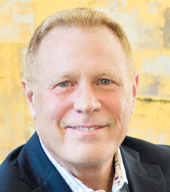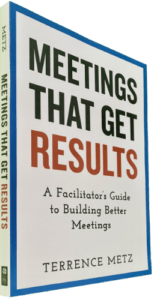With data transformation, each piece of data or single cell might be decomposed into another layer. Amplify this approach even further by splitting your four cells into sixteen.
Therefore, see the chart below. We can now ask, generate, and record sixteen pieces of information on a large Post-It® for each assignment. Note how we take the four basic criteria below and expand them into four additional details (for illustrative purposes only).
Other Best Practices articles instructed that one key to facilitating effective analysis mandates the facilitator to ask open-ended questions, not simple, close-ended (i.e., yes or no) confirmations. For example, and pardon the simplicity, do not ask “Does the sport of curling involve any sweat?” Someone will make a compelling argument that it does, albeit minimal perhaps. The superior question, simply re-phrased: “To what extent does the sport of curling involve sweat? (a lot, little, or somewhere in between)”.
When building a roles and responsibilities matrix for example, the classic approach identifies who is going to be ‘Responsible’ for some apportioned activity or assignment, and the appropriate single cell is given a large, red “R”. At minimum you might ask four questions, such as:
- What role will be responsible for this assignment? (e.g., Business Analyst)
- When will we reach completion? (e.g., date specific)
- How much financial resources will be required to complete it? (eg, $,$$$)
- What is the estimated FTE required to bring it to completion? (FTE = full-time equivalent, such as 0.25 which is one person, full-time, for three months)
-
What role will be responsible for this assignment? (e.g., RASI Chart)
- What role is ultimately being held Accountable and paying for this initiative? (e.g., EVP)
- What role will be Responsible for this assignment? (e.g., Business Analyst)
- What roles will be Supporting this assignment? (e.g., Project Manager)
- What roles need to be Informed about this assignment? (e.g., Customer)
-
At what estimated point in time will we reach completion? (e.g., date specific)
- When does concerted effort begin? (e.g., date specific)
- What is the projected halfway point? (e.g., date specific)
- At what estimated point in time will completion be final? (e.g., date specific)
- When will the effort be reviewed such as Retrospective or Look Back? (e.g., date specific)
-
How much financial resources will be required to complete it? (eg, $,$$$)
- What are the estimated research costs? (e.g., $,$$$)
- What are the estimated acquisition costs? (e.g., $,$$$)
- What are the estimated operational costs? (e.g., $,$$$)
- What are the estimated termination costs? (e.g., $,$$$)
-
What is the estimated FTP required to bring it to completion? (FTP = full-time person, such as 0.25 which is one person, full-time, for three months)
- What maximum number of people work at the same time? (e.g., Quantity)
- Call on which special subject matter experts? (e.g., Title[s])
- How much FTP will bring it to completion? (e.g., FTP)
- Codify any special issues not described above. (narrative, perhaps coded)
Having left a meeting can be comforting because the amount of detail described above is substantial, but knowing that it was consensually built and is now owned by the meeting participants is reassuring. When applied to a project plan, using questions similar to the ones shown above, you will deliver a more detailed GANTT chart than most people build in their cubicles alone. Hand this off to an intern who claims to be an “expert” with Microsoft Project Manager® and tell them to bring you back a full resource-allocated project plan so that you can go on to your next meeting.
______
Don’t ruin your career by hosting bad meetings. Sign up for a workshop or send this to someone who should. MGRUSH workshops focus on meeting design and practice. Each person practices tools, methods, and activities every day during the week. Therefore, while some call this immersion, we call it the road to building high-value facilitation skills.
Our workshops also provide a superb way to earn up to 40 SEUs from the Scrum Alliance, 40 CDUs from IIBA, 40 Continuous Learning Points (CLPs) based on Federal Acquisition Certification Continuous Professional Learning Requirements using Training and Education activities, 40 Professional Development Units (PDUs) from SAVE International, as well as 4.0 CEUs for other professions. (See workshop and Reference Manual descriptions for details.)
Want a free 10-minute break timer? Sign up for our once-monthly newsletter HERE and receive a timer along with four other of our favorite facilitation tools, free.
Related video

Terrence Metz, president of MG RUSH Facilitation Training, was just 22-years-old and working as a Sales Engineer at Honeywell when he recognized a widespread problem—most meetings were ineffective and poorly led, wasting both time and company resources. However, he also observed meetings that worked. What set them apart? A well-prepared leader who structured the session to ensure participants contributed meaningfully and achieved clear outcomes.
Throughout his career, Metz, who earned an MBA from Kellogg (Northwestern University) experienced and also trained in various facilitation techniques. In 2004, he purchased MG RUSH where he shifted his focus toward improving established meeting designs and building a curriculum that would teach others how to lead, facilitate, and structure meetings that drive results. His expertise in training world-class facilitators led to the 2020 publication of Meetings That Get Results: A Guide to Building Better Meetings, a comprehensive resource on effectively building consensus.
Grounded in the principle that “nobody is smarter than everybody,” the book details the why, what, and how of building consensus when making decisions, planning, and solving problems. Along with a Participant’s Guide and supplemental workshops, it supports learning from foundational awareness to professional certification.
Metz’s first book, Change or Die: A Business Process Improvement Manual, tackled the challenges of process optimization. His upcoming book, Catalyst: Facilitating Innovation, focuses on meetings and workshops that don’t simply end when time runs out but conclude with actionable next steps and clear assignments—ensuring progress beyond discussions and ideas.




